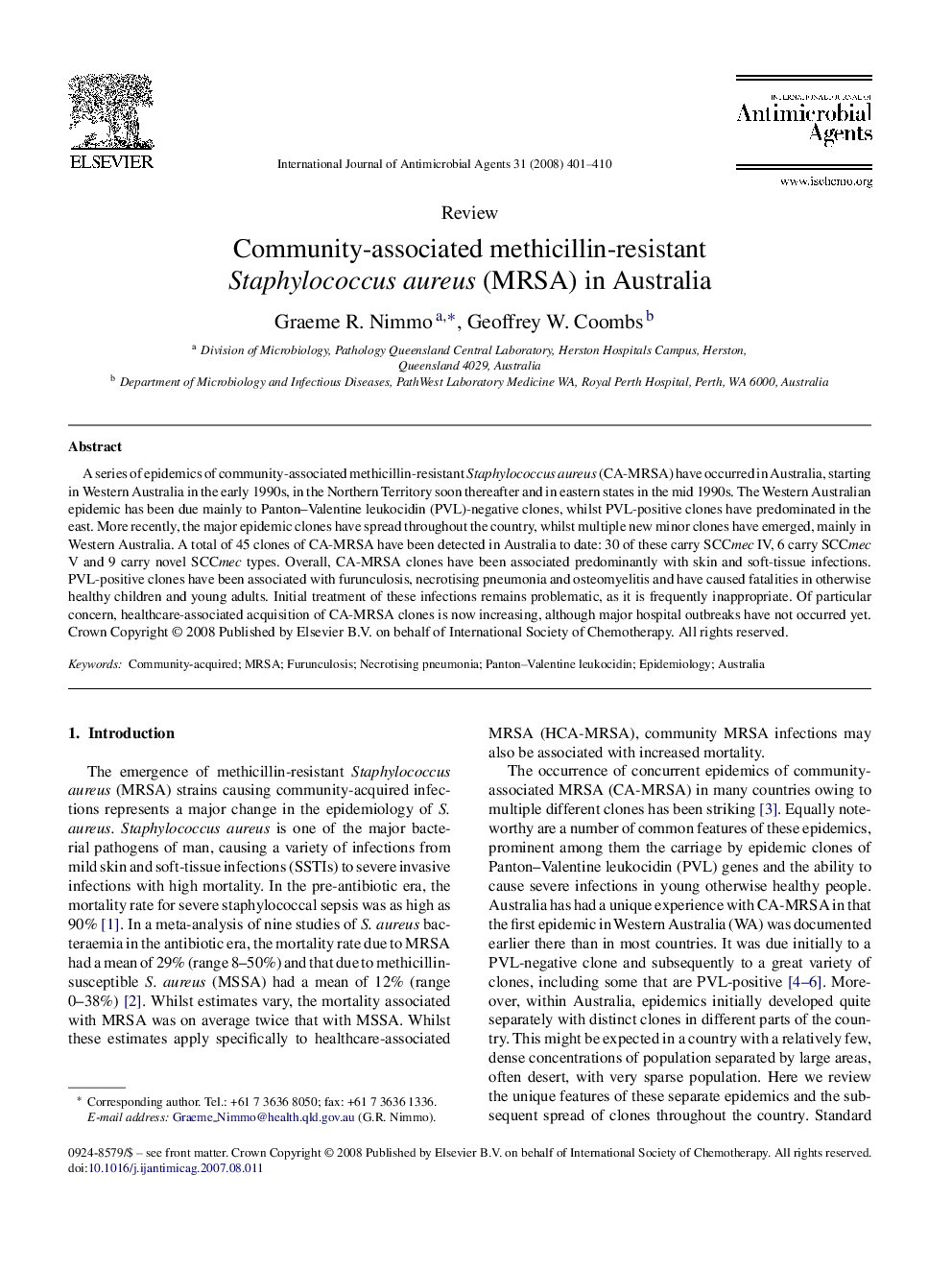| Article ID | Journal | Published Year | Pages | File Type |
|---|---|---|---|---|
| 3360558 | International Journal of Antimicrobial Agents | 2008 | 10 Pages |
A series of epidemics of community-associated methicillin-resistant Staphylococcus aureus (CA-MRSA) have occurred in Australia, starting in Western Australia in the early 1990s, in the Northern Territory soon thereafter and in eastern states in the mid 1990s. The Western Australian epidemic has been due mainly to Panton–Valentine leukocidin (PVL)-negative clones, whilst PVL-positive clones have predominated in the east. More recently, the major epidemic clones have spread throughout the country, whilst multiple new minor clones have emerged, mainly in Western Australia. A total of 45 clones of CA-MRSA have been detected in Australia to date: 30 of these carry SCCmec IV, 6 carry SCCmec V and 9 carry novel SCCmec types. Overall, CA-MRSA clones have been associated predominantly with skin and soft-tissue infections. PVL-positive clones have been associated with furunculosis, necrotising pneumonia and osteomyelitis and have caused fatalities in otherwise healthy children and young adults. Initial treatment of these infections remains problematic, as it is frequently inappropriate. Of particular concern, healthcare-associated acquisition of CA-MRSA clones is now increasing, although major hospital outbreaks have not occurred yet.
